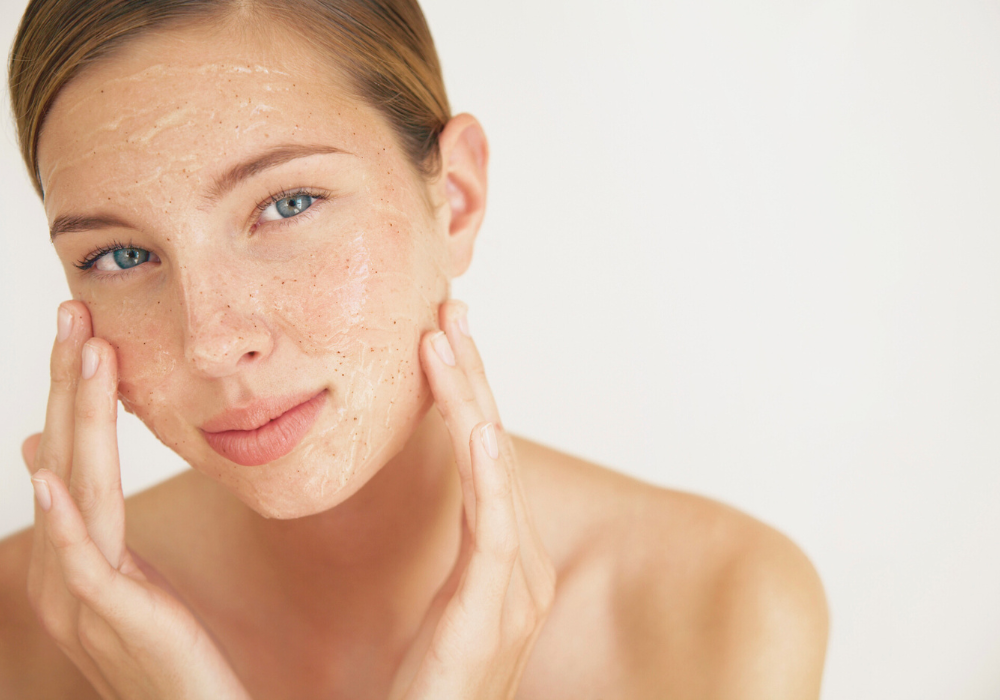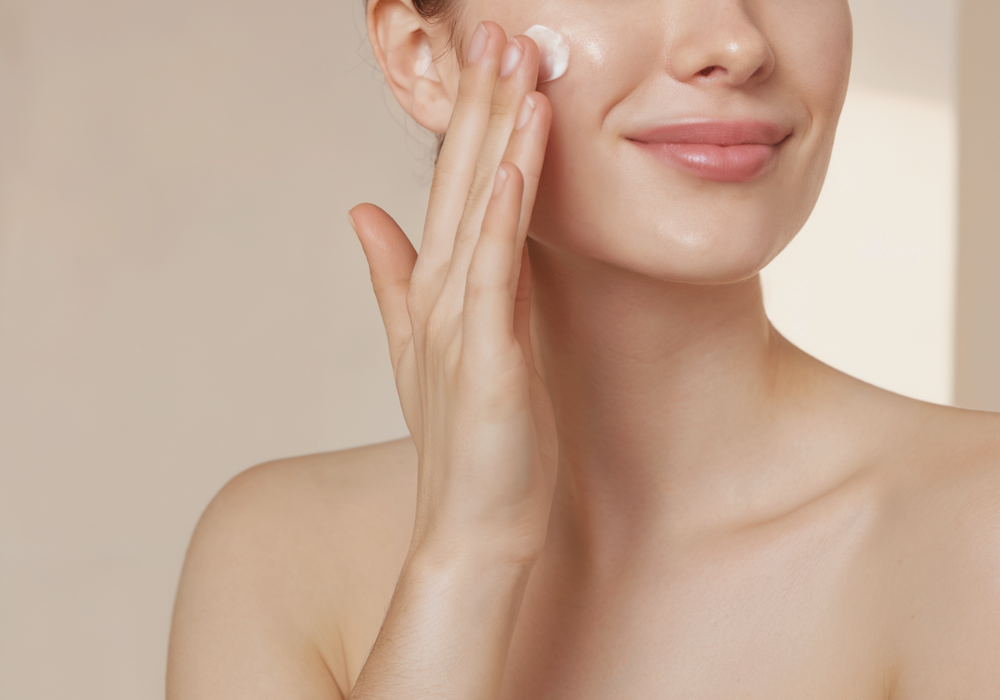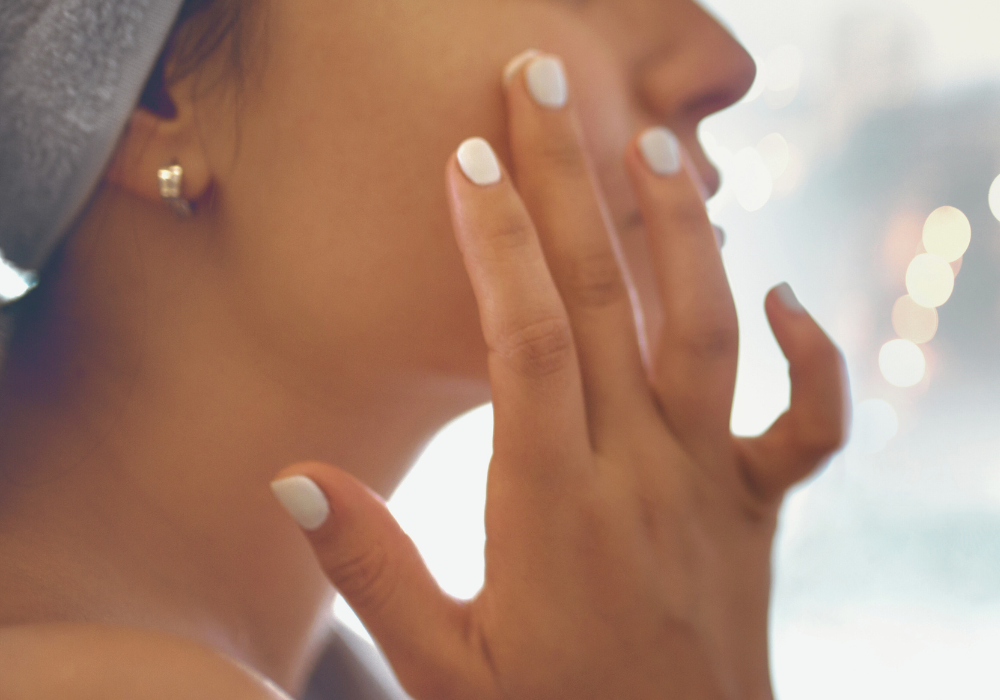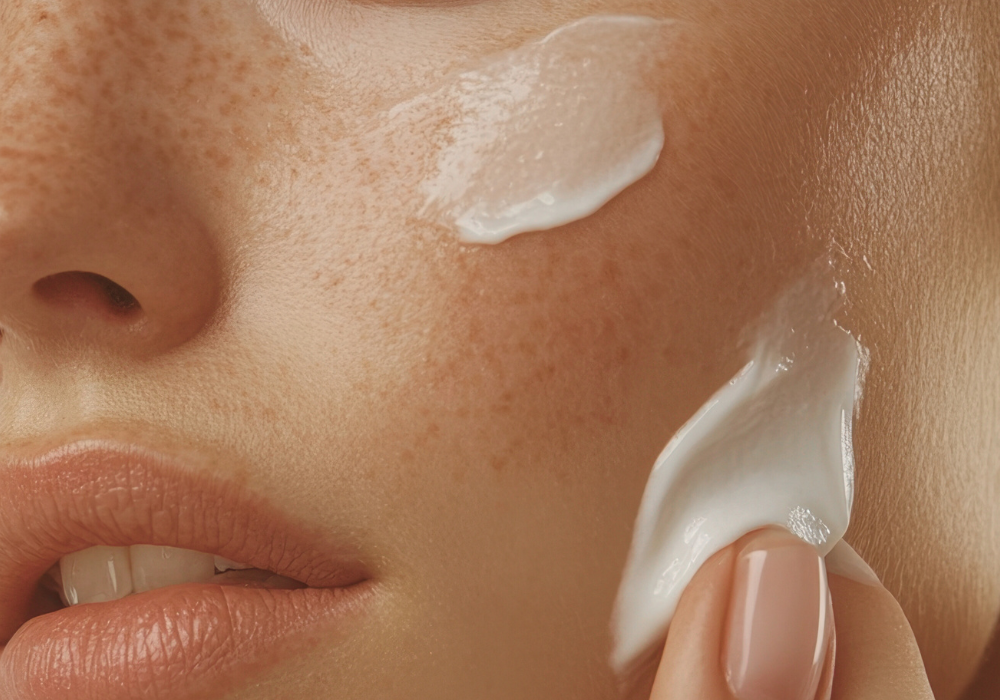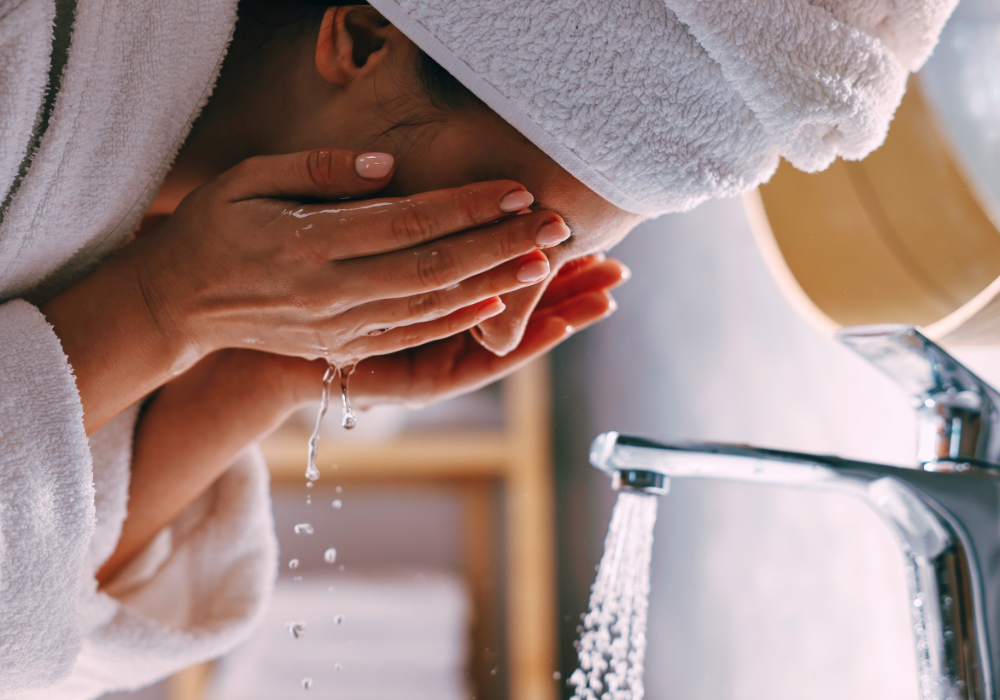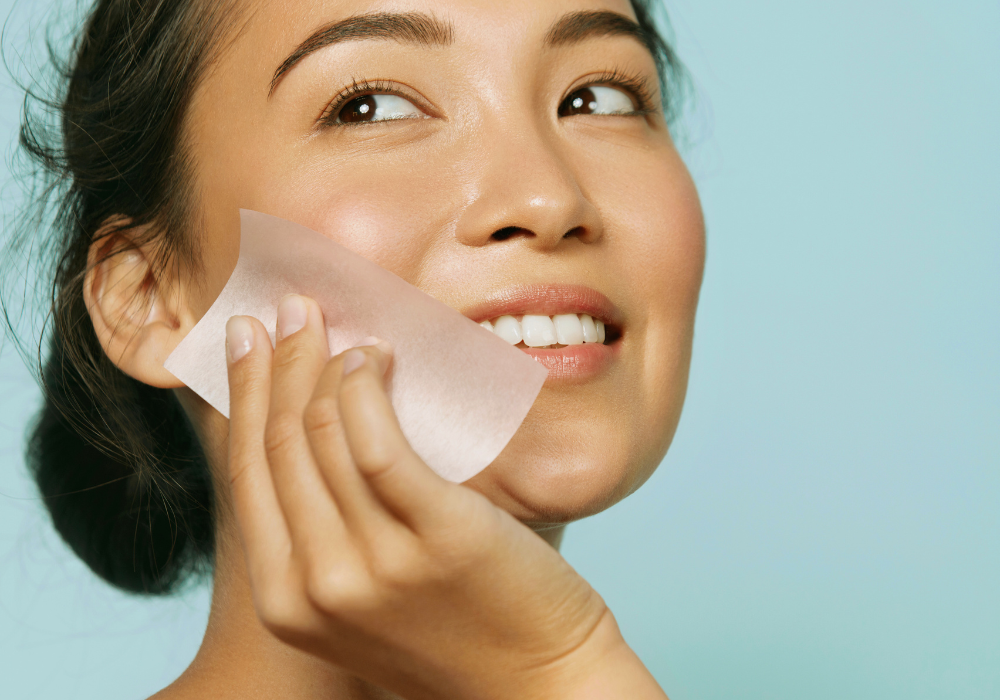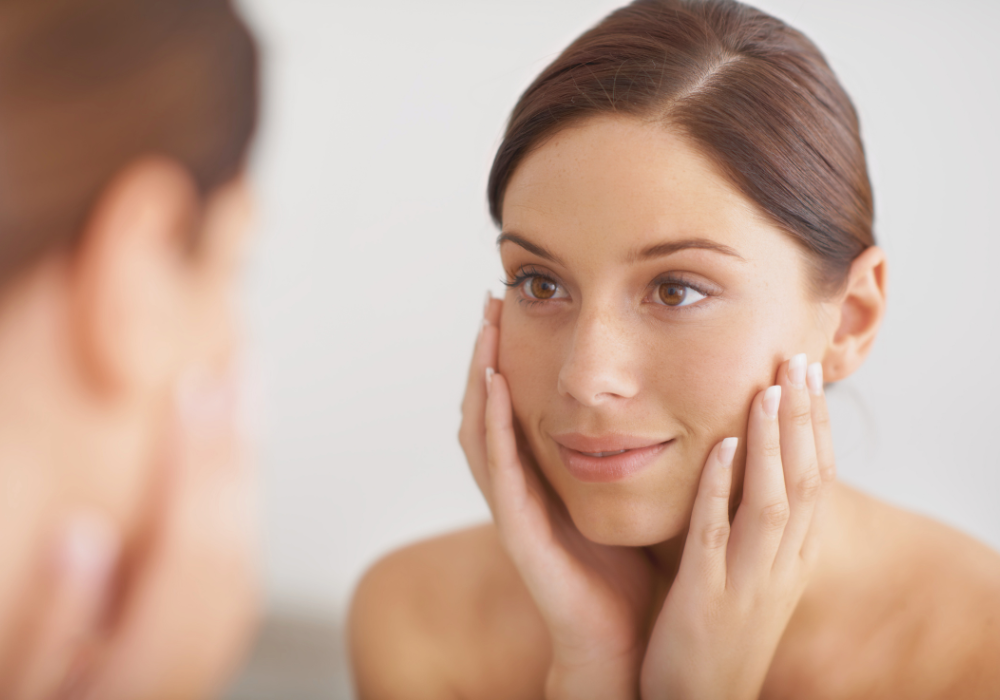Comprehensive data compiled from extensive research on exfoliating cleanser efficacy, market trends, and consumer behavior
Key Takeaways
-
The market validates your skincare priorities – With the global exfoliating cleanser market valued at $2.46 billion in 2025, millions worldwide prioritize exfoliation as an essential skincare step
-
Chemical exfoliants dominate for good reason – Accounting for 70% of market share, chemical formulations deliver controlled, uniform exfoliation without physical abrasion
-
Results happen faster than you think – Clinical studies show 10-17% improvement in pore factors and 6.47% texture reduction after just one week of use
-
Your skin's natural renewal slows significantly with age – Cell turnover extends from 20 days in young adults to over 30 days in older adults, making exfoliation increasingly essential
-
Clean beauty isn't a trend but a market force – The sustainable skincare market reached $190.7 billion in 2024 and projects to hit $433.2 billion by 2034
-
Multi-functional formulas meet modern expectations – Consumers increasingly demand products that combine exfoliation with hydration, as evidenced by dual-benefit product growth
-
Oily skin users lead adoption – Representing 35% of market share, those with oily skin benefit most from sebum control and pore refinement
-
Online purchasing reshapes the category – E-commerce sales are growing at 8.3% annually through 2030, driven by access to reviews and product variety
The exfoliating daily cleanser category represents one of skincare's fastest-growing segments, driven by consumer education about chemical exfoliation benefits and increasing demand for science-backed formulations. These 14 statistics reveal how market dynamics, clinical evidence, and consumer behavior converge to shape the modern exfoliation landscape.
Market Growth & Consumer Adoption
1. $2.46 billion global exfoliating cleanser market demonstrates widespread adoption
The global exfoliating cleanser market reached $2,463.1 million in 2025, reflecting how consumers worldwide have integrated exfoliation into daily routines. This substantial market value indicates that exfoliating cleansers have moved beyond specialty products to become foundational skincare essentials. The market size validates that millions of consumers prioritize exfoliation for addressing skin texture, clarity, and overall complexion health.
This widespread adoption creates higher standards for formulation quality and efficacy. Consumers now expect exfoliating cleansers to deliver multiple benefits without compromising skin barrier function. Products like Kipi's Exfoliating Daily Cleanser meet this demand through Triple Action Hydroxy Acids (2.4% total) combined with Charged Hyaluronic Acid (0.1%) to simultaneously exfoliate and hydrate, addressing the market's evolution toward multifunctional formulations.
2. 7.9% CAGR positions exfoliators among fastest-growing skincare categories through 2030
The broader exfoliators market expanded from $6.85 billion in 2023 to a projected $11.5 billion by 2030, representing a compound annual growth rate of 7.9%. This growth trajectory significantly outpaces many established skincare categories, driven by three primary factors: cloud adoption of personalized skincare routines, increasing regulatory complexity around ingredient transparency, and global expansion of science-backed beauty standards.
The steady growth reflects sustained consumer interest rather than temporary trends. As awareness of chemical exfoliation benefits spreads through social media education and dermatologist recommendations, adoption continues expanding across demographics and geographies. Brands offering science-backed skincare formulations with transparent ingredient percentages position themselves to capture this growing market demand.
3. 70% chemical exfoliant market share reflects consumer preference for controlled exfoliation
Chemical exfoliators now account for approximately 70% of the exfoliators market, significantly dominating physical exfoliants. This market concentration demonstrates widespread consumer understanding that acids like AHAs and BHAs deliver more uniform, predictable results than physical scrubs. Chemical formulations work at the cellular level to dissolve bonds between dead skin cells, enabling controlled exfoliation without the micro-tears or irritation that harsh physical scrubs can cause.
This dominance stems from dermatologist advocacy for chemical exfoliants, particularly for sensitive and acne-prone skin types. Harvard dermatologists note that chemical exfoliants "work on a more micro-level to help dissolve excess skin cells and reduce uneven pigmentation sitting at the surface of the skin" while also restoring glow and improving acne. Formulations featuring multiple acid types, like the 1% AHA complex, 0.4% BHA salicylic acid, and 1% PHA gluconolactone in Kipi's cleanser, deliver comprehensive exfoliation targeting different skin layers and concerns simultaneously.
Clinical Efficacy & Usage Patterns
4. 10-17% improvement in pore factors achieved within one week of consistent use
Clinical evaluation of advanced exfoliating complexes demonstrated 10-17% improvement in multiple pore factors including blackheads, whiteheads, and pore volume after just one week of use. This rapid visible improvement addresses consumer demand for products that deliver noticeable results quickly, increasing adherence to skincare routines and satisfaction with exfoliating formulations.
The study evaluated a mandelic acid-carnitine complex formulated at pH 4.5, demonstrating that properly engineered exfoliating materials achieve high efficacy with minimal irritation potential even at skin-friendly pH levels. Products formulated within the skin's natural pH range of 4.5-5.5 maintain effectiveness while supporting barrier function. The one-week timeline to visible results makes daily-use exfoliating cleansers practical for those seeking consistent skin improvement without waiting months for benefits.
5. 6.47% statistically significant texture improvement demonstrates measurable skin benefits
The same clinical study showed skin texture reduction of 6.47% (p < 0.001) after only one week, indicating rapid overall skin improvement that extends beyond pore refinement. This statistically significant result provides objective evidence that exfoliating cleansers deliver quantifiable benefits rather than subjective perception changes. Texture improvement translates to smoother skin surface, enhanced light reflection for increased radiance, and improved makeup application.
These measurable outcomes validate consumer investment in exfoliating products. For those seeking evidence-based skincare, formulations combining multiple exfoliating mechanisms—like AHAs for surface texture, BHAs for pore penetration, and PHAs for gentle hydration—address texture concerns from multiple angles. The rapid improvement timeline makes exfoliating cleansers suitable for event preparation or seasonal skin refreshment.
6. 50% of acne patients show improvement after third treatment session
Comparative studies of chemical peels for acne found that 50% of patients exhibited improvement after the third treatment session when acids were applied twice weekly. Both glycolic acid and salicylic acid peels showed similar efficacy for mild-to-moderate acne vulgaris with good tolerance profiles. This six-week timeline to visible acne improvement provides realistic expectations for those incorporating exfoliating cleansers into acne management routines.
The research demonstrates that salicylic acid, a BHA, proves particularly effective for acne due to its oil-solubility allowing pore penetration. Formulations including 0.4% BHA salicylic acid alongside complementary acids address active acne while preventing future breakouts through consistent pore refinement. For acne-prone users, gentle daily exfoliation offers a preventive approach rather than reactive spot treatment.
Skin Biology & Age-Related Changes
7. 20-day cell turnover in young adults extends 10+ days in older adults
Research measuring stratum corneum transit time found that young adults complete the process in approximately 20 days, while older adults require more than 10 additional days for the same cellular renewal. This 50%+ increase in turnover time explains why skin appears duller and rougher with age—the longer dead cells remain on the surface, the more light scattering reduces radiance and texture feels coarser.
The decline in epidermal cell renewal accelerates dramatically after age 50, compounding age-related skin changes. Regular exfoliation becomes increasingly beneficial with age, artificially accelerating the slowed natural process to maintain smoother texture and brighter appearance. Products containing panthenol (Pro-vitamin B5) at 1% support skin barrier function during this assisted turnover, preventing the dryness that can accompany increased exfoliation in mature skin.
Skin Type Distribution & Product Selection
8. 35% market share for oily skin formulations reflects specific need for sebum control
Usage of exfoliators for oily skin type accounted for approximately 35% of market share in 2023, as these consumers particularly benefit from products that control excess sebum production and unclog pores. Oily skin produces more surface lipids that combine with dead skin cells to create pore-blocking debris, making regular exfoliation essential for preventing breakouts and maintaining skin clarity.
BHAs like salicylic acid prove especially effective for oily skin due to their lipid-solubility, enabling penetration through sebum to reach pore interiors. However, oily skin still requires hydration—a common misconception is that oily skin doesn't need moisture. Formulations pairing exfoliating acids with moisture-locking natural sugars and hyaluronic acid address both sebum control and hydration needs. The pH-balanced formulation at 4.5-5.5 in products designed for multiple skin types prevents the over-stripping that can paradoxically increase oil production as skin compensates for excessive dryness.
Product Format & Application Trends
9. 31% market share for exfoliating scrubs despite chemical exfoliant dominance
Despite chemical exfoliants' market leadership, exfoliating scrubs still held approximately 31% of the exfoliators market share in 2023. This persistent popularity stems from the immediate, tangible results scrubs provide in improved skin texture and the sensory satisfaction of physical exfoliation. Consumers appreciate the tactile feedback and instant smoothness physical exfoliants deliver.
However, dermatologists increasingly recommend chemical exfoliants over physical scrubs to minimize irritation risk. Experts warn that physical exfoliation "can aggravate inflammatory acne and make it worse" when performed too harshly. The market trend toward chemical formulations reflects growing consumer education about gentle yet effective exfoliation methods. Products combining the cleansing ritual familiarity with chemical exfoliant benefits—like creamy foaming cleansers with acid complexes—bridge consumer preference for tactile experiences with superior efficacy.
10. 10% CAGR for exfoliating masks signals convenience-driven growth through 2030
Exfoliating masks are anticipated to grow at 10.0% CAGR from 2024 to 2030, the fastest rate among exfoliating product formats. This accelerated growth reflects consumer demand for products providing both exfoliation and nourishment in a single application. Masks offer a self-care ritual experience while delivering targeted treatment, making them appealing for weekly intensive exfoliation supplementing daily cleansing routines.
The mask format's growth doesn't diminish daily cleansers' importance but rather indicates category expansion. Consumers increasingly adopt layered approaches: daily gentle exfoliation for maintenance combined with weekly intensive treatments for deeper renewal. For those building comprehensive routines, a daily exfoliating cleanser forms the foundation, while masks provide supplementary treatment.
Distribution & Purchase Behavior
11. 8.3% annual e-commerce growth driven by reviews and product education
Online sales of exfoliators are expected to grow at 8.3% CAGR from 2024 to 2030, outpacing traditional retail channels. E-commerce platforms provide convenience, wide product variety, and access to detailed customer reviews that inform purchasing decisions. Consumers research ingredient concentrations, pH levels, and formulation details online before purchasing, making transparency essential for digital success.
This digital shift benefits science-backed brands that clearly communicate formulation details. Products listing specific acid percentages (like 1% AHA complex, 0.4% BHA, 1% PHA) and supporting ingredients (0.1% charged hyaluronic acid, 1% panthenol) empower informed consumer choice. The subscription model's popularity in online skincare—offering products every 8 weeks with 20% savings—aligns with the consistent replenishment exfoliating cleansers require for sustained results.
Clean Beauty & Ingredient Transparency
12. $190.7 billion sustainable skincare market reflects clean ingredient demand
The global sustainable beauty and skincare market was valued at $190.7 billion in 2024 and is predicted to reach $433.2 billion by 2034 at an 8.6% CAGR. This explosive growth demonstrates that clean beauty has evolved from niche trend to mainstream expectation. Consumers increasingly demand natural, organic, and eco-friendly formulations free from synthetic chemicals, parabens, and sulfates.
This movement significantly impacts exfoliating cleansers, driving innovation in natural AHA sources. Naturally occurring alpha hydroxy acids from citrus fruit extracts provide effective exfoliation while meeting clean beauty standards. Vegan and cruelty-free certifications have become baseline expectations rather than premium features. Brands committed to ethical practices, sulfate-free and paraben-free formulations, and natural fragrance from citrus-herb sources align with consumer values while maintaining efficacy through science-backed concentrations.
Regional Market Dynamics
13. 51.58% Asia Pacific market share drives global exfoliation trends
Asia Pacific dominated the skincare market with 51.58% market share in 2024, driven by increasing disposable incomes, urbanization, and changing lifestyles in countries like China, India, and Japan. This regional concentration creates significant demand for exfoliating cleansers, as Asian skincare routines emphasize multi-step approaches and early preventive care. The region's influence shapes global product development, with innovations in gentle exfoliation and hydration-focused formulations originating from Asian beauty laboratories.
The Asia Pacific market's size makes it the testing ground for new formulation technologies. Innovations like charged hyaluronic acid—engineered to carry positive charges that enhance water molecule binding—often debut in Asian markets before global expansion. Lightweight formulas that absorb quickly without residue, a hallmark of Asian skincare preferences, now define consumer expectations worldwide.
Physical vs. Chemical Exfoliation Evolution
14. 9.1% CAGR for physical exfoliators indicates sustained niche demand
Despite chemical exfoliants' dominance, physical exfoliators are expected to grow at 9.1% CAGR from 2024 to 2030. This growth exceeds overall category rates, driven by consumers' appreciation for immediate, tangible results and the sensory experience physical exfoliation provides. However, this growth concentrates in refined formulations with biodegradable particles rather than harsh scrubs with irregular fragments.
The evolution toward gentler physical exfoliants with uniform particles reflects market maturation. Consumers educated about micro-tear risks now seek smooth jojoba beads, rice powder, or sugar crystals rather than crushed nut shells. Many brands eliminate physical exfoliation entirely, recognizing that chemical formulations deliver superior results with lower irritation risk. For those prioritizing skin health over sensory preference, chemical exfoliating cleansers offer evidence-based benefits without the mechanical stress physical methods create.
The Bottom Line
These 14 statistics reveal an exfoliating cleanser market driven by scientific validation, consumer education, and increasing demand for multifunctional formulations. The $2.46 billion market growing at 7.9% annually demonstrates that exfoliation has moved from optional luxury to essential skincare step for millions worldwide.
The data validates several critical insights: chemical exfoliants' 70% market dominance reflects their superior controlled exfoliation; rapid results like 10-17% pore improvement within one week prove efficacy; and the $190.7 billion sustainable beauty market confirms that clean ingredients are now baseline expectations.
For consumers navigating this expanding market, the evidence points toward science-backed formulations that combine multiple acid types (AHAs, BHAs, PHAs) with hydrating ingredients like hyaluronic acid and panthenol. Products formulated at skin-friendly pH levels (4.5-5.5) deliver exfoliation benefits without compromising barrier function. The subscription model's growth in online channels indicates that consumers value consistent replenishment of effective products.
Perhaps most importantly, understanding that skin cell turnover slows by 50%+ with age clarifies why regular exfoliation becomes increasingly beneficial over time. Combined with clinical evidence showing 50% acne improvement after six weeks and significant texture reduction after one week, exfoliating cleansers represent one of skincare's most evidence-based interventions for maintaining healthy, clear, radiant skin.
Frequently Asked Questions
What percentage of consumers use exfoliating cleansers daily vs. weekly?
While specific daily versus weekly usage statistics weren't available in current research, clinical studies demonstrate effective protocols. Research shows that twice-weekly application produces measurable acne improvement, while dermatologists recommend frequency based on skin type: normal skin can exfoliate 2-3 times weekly, oily skin may benefit from daily use, and sensitive skin should limit to once weekly. Products formulated for daily use, like those with balanced acid concentrations (2.4% total hydroxy acids) and pH levels at 4.5-5.5, enable consistent exfoliation without over-treating skin.
How effective are chemical exfoliants compared to physical exfoliants based on market data?
Chemical exfoliants now represent 70% of the exfoliators market, significantly dominating physical options. This market concentration reflects clinical evidence that chemical formulations deliver more uniform results with lower irritation risk. Harvard dermatologists note that chemical exfoliants "work on a more micro-level to help dissolve excess skin cells and reduce uneven pigmentation" while improving acne and restoring glow. Clinical studies demonstrate 10-17% improvement in pore factors after one week with chemical complexes, providing measurable efficacy data that physical scrubs cannot match.
What skin type uses exfoliating face cleansers most frequently according to 2025 data?
Oily skin users account for approximately 35% of the exfoliators market, making them the largest single skin type segment. This concentration reflects oily skin's particular need for sebum control and pore refinement. BHAs like salicylic acid prove especially effective for this group due to oil-solubility enabling pore penetration. However, successful exfoliating cleansers now address multiple skin types—normal, dry, combination, and oily—through pH-balanced formulations (4.5-5.5) and hydrating ingredients like hyaluronic acid that prevent the over-drying that can paradoxically worsen oil production.
What is the average repurchase rate for exfoliating cleansers?
While specific repurchase statistics weren't available in current research, subscription model adoption in the skincare category indicates strong repeat purchase behavior. The 8.3% annual growth in online exfoliator sales driven by auto-delivery convenience suggests consumers value consistent replenishment. Products with approximately 2-month consumption periods align with subscription delivery every 8 weeks, optimizing convenience and value. Clinical evidence showing rapid results—10-17% pore improvement within one week—likely supports high repurchase rates as consumers experience visible benefits that encourage continued use.
How many people prefer natural exfoliation methods vs. synthetic ingredients?
The sustainable beauty and skincare market reached $190.7 billion in 2024, projected to hit $433.2 billion by 2034 at 8.6% CAGR, demonstrating strong preference for natural formulations. However, "natural" doesn't exclude effective chemical exfoliants—naturally occurring alpha hydroxy acids from citrus fruit extracts provide the same molecular benefits as synthetic versions. The market trend favors transparent formulations disclosing specific acid types and percentages (like 1% AHA from citrus extracts, 0.4% BHA salicylic acid, 1% PHA gluconolactone) regardless of whether sources are plant-derived or lab-created, as long as products meet vegan, cruelty-free, sulfate-free, and paraben-free standards.
Sources Used
-
PMC - Enhancement of Exfoliating Effects through Novel Complex
-
InsightAce Analytic - Sustainable Beauty and Skincare Market
